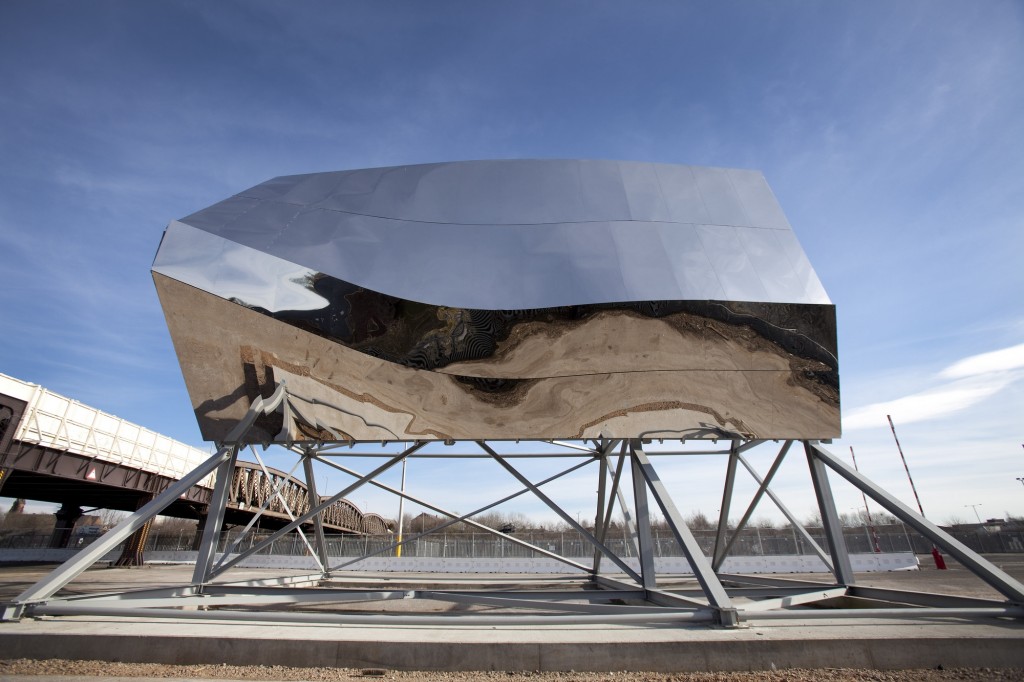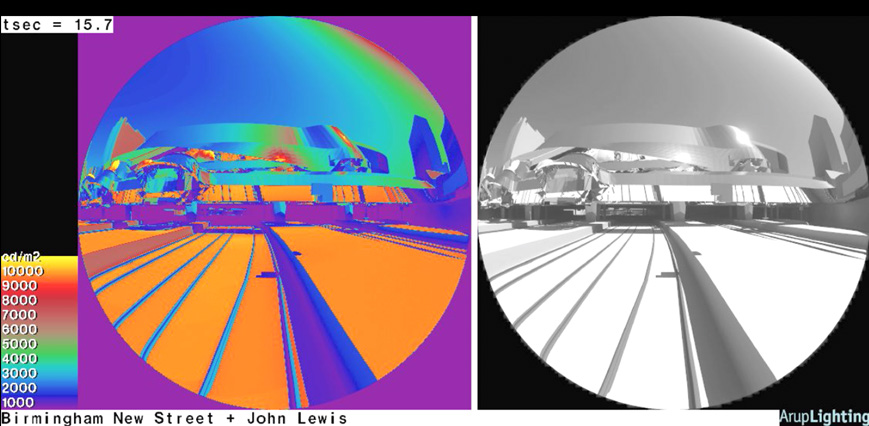
Over 140,000 passengers use New Street every day, more than double the number it was designed to cater for. The station was dark, unwelcoming and overcrowded with poor access for passengers. Network Rail and delivery partner Mace are transforming it into exactly the kind of station passengers deserve and that the people of Birmingham will be proud of.
The £650million Gateway project, a joint scheme between Birmingham City Council, Network Rail, Advantage West Midlands and Centro, will double passenger capacity and has created:
- more accessible, brighter and clearer platforms, serviced by new escalators and lifts an iconic new station façade, adding to Birmingham’s growing reputation for good design.
- a concourse that is three-and–a-half times bigger than at present and enclosed by a giant light-filled atrium.
- better links to and through the station for pedestrians with eight new entrances.
- the stimulus for the physical regeneration of the areas surrounding the station leading to the potential creation of over 10,000 new jobs across the city.
New Street facts
New Street is the busiest station outside London and the busiest interchange station in the UK with a train leaving the station every 37 seconds.
- At peak during Phase 1, 1000 workers were on site, working 24 hours a day, 7 days a week.
- The first half of the new station completed in April 2013 and from 2015 there is 36 new escalators and 15 new lifts – reaching every platform.
challenge
The Iconic facade
The striking concept design clad in shimmering, reflective stainless steel will create a bold, modern gateway to the city for the millions of people using the station each year. The iconic design is the work of the renowned AZPA (formerly Foreign Office Architects) Designers who won an international RIBA competition and landed concept design role for the prestigious project. However, in the quest of creating this innovative, iconic façade not seen on any major project in the country created its own challenges of not just attaching it to a 1960’s structure but also the effects the highly reflective
facade would have on the local environment and especially train drivers approaching and leaving from the 12 platforms below during sunny periods with the risk of reflected glare. Safety for all passengers and train crew on the operational rail network is of utmost priority to Network Rail and therefore any risk identified that the highly reflective façade may affect the train drivers approaching the station required a clear concise and accurate approach to mitigate this risk.
solution
The task to identify and resolve any risk the façade potentially created was given to Azhar Quaiyoom of Q Sustain Ltd seconded into the Network Rail Governance team for the New Street project. Glare analysis from such a highly reflective façade was unusual within Network Rail and Q Sustain Ltd teamed up with Arup with a remit to provide a highly visual output to demonstrate and illustrate glare risk and intensity to Network Rail’s stakeholders and train operating companies at varying times and seasons throughout the year.
Lighting Analysis Objective
Risk identified was sunlight reflected from the facade towards the train drivers with the potential hazard that the intensity and direction may prevent them clearly identifying a signal as they approach the station. Arup was appointed to analyse and interpret the magnitude, timing and duration of any debilitating glare effects associated with reflected sunlight from the facade. Glare Types Two different glare types could be considered relevant to this type of project; disability glare and discomfort glare, defined by the CIE as follows: Discomfort glare Glare that causes discomfort without necessarily impairing the vision of objects For example, snow in bright sunlight can have a luminance of ~300 Cd/m2, which is uncomfortable, but can be remedied with sunglasses. Cd = Candela is a measure of light (luminous) intensity emitted by a light source in a given direction.
Disability glare
Glare that impairs the vision of objects due to the intensity of the light source onto the retina or the contrast ratio with the background. For example, viewing undipped headlights on a country road where the glare source is small and bright against a darker backdrop. These glare sources make it difficult see duller objects near the source. Disability glare is caused by light scattered within the eye, often due to the entering of excess light. This scattering lays a luminous veil over the retinal image and reduces the contrasts within the image. Furthermore, the time taken to recover from disability glare extends with age.
It is standard practice for Network Rail to issue drivers with sunglasses to aid their vision against discomfort glare. However, disability glare will prevent the train drivers doing their tasks safely and action would be required to ’design out’ any aspects of the facade which may affect the train drivers ability to perform their task.
The disability glare metric used as the basis for this modelling work was published in a paper and following process was followed:
1. Data collection from a facade mock-up at nearby yard:
- Full size mock up of a facade sections (approx 20m x 10m)
- Luminance measurements taken
- High dynamic range photography for analysis
- Data used for calibration of software model
Mock Up Findings
Under clear sky conditions, significant sunlight images and reflections were recorded on the façade and the ground beneath the mock up. It was observed that these reflections were dependant on the viewing location, degree of cloud cover and orientation of the façade panels. Under clear sky conditions, multiple images of the sun were experienced in a number of locations on the façade which were of high luminance and manifested into ripples of reflected sunlight on the ground beneath.
2. Compile a 3D city model of the zone of influence around Birmingham New Street Station from a variety of sources:
- Digital terrain mapping of Birmingham city centre
- 3D railway track alignment model
- Architect’s Rhino model of the proposed station building 3.
3.Sun Reflection simulation
This exercise involved Radiance 3D sunlight modelling throughout the daylight hours of each solstice and equinox to understand the location and movement of the sunlight reflected from the facade. The warping of the facade and constantly moving sun position could potentially pose an infinite number of sunlight reflection possibilities which require computer modelling.
The objective of this exercise was to determine when sunlight reflections of significant scale and duration land on a particular zone of track where the train drier may be trying to visually locate a signal in the distance. These significant reflections are then analysed for disability glare.
4.Sunlight Reflection into Signals
As a result of the run reflection simulation, Arup discovered that sunlight could be directed into a railway signal Fresnel lens. The outcome could be that the signal light appears illuminated when it is not or the sunlight is of sufficient intensity that it obliterates the colour of the signal. Arup subsequently completed an analysis of a variety of railway signals, simulating the optical performance of the signals using measured weather data.
5. Disability Glare Assessment
Having established the location of significant sunlight reflections the approaches to five platforms from the east and west directions were tested for disability glare (veiling luminance) using an algorithm based on the Holladay-Stiles formula for veiling luminance:
The veiling luminance (Lv) depends upon the angular distance from the source. ‘E’ is the illuminance in the plane of the eye due to the glare light source and ‘θ’ is the angular distance in degrees. The Hassall paper proposes that the veiling luminance threshold is 500cd/m2. A veiling luminance measured or predicted above this value will result in disability glare.
The ability of the train drivers to view the approaching signals is related to the speed of the train. As a train approaches the station it has a maximum speed of 10mph. Using Radiance, Arup produced an animation of the train driver’s field of view travelling at 10mph towards the station. The animation included conditioning of each frame with a human visual response function which simulated internal scattering in the human eye resulting in the loss of visible contrast near bright sources. Each frame of the animation was numerically analysed for veiling illuminance and a profile of the driver’s journey created to establish the magnitude and duration of any disability glare effects.
Glare Assessment

Radiance model showing intensity of reflection

Sunlight Simulation Findings
As expected, a number of locations on the track bed were found to experience significant areas of reflected sunlight. These were analysed and the veiling luminance was found to exceed the 500cd/m2 threshold on a number of occasions during the driver’s approach to the station.
The data was presented to the design team, architect and railway signalling specialists to determine any adverse effects which may be possible from the disability glare and the facade form was optimised to deflect the reflections or reduce the duration of the disability glare effects to tolerable levels.
